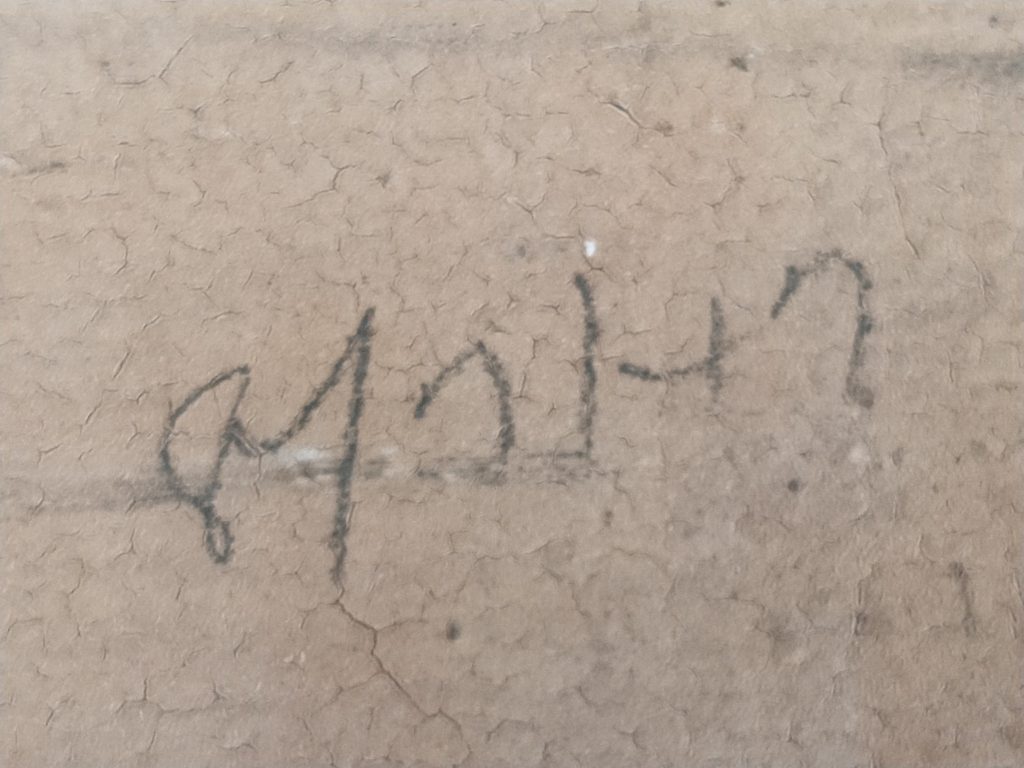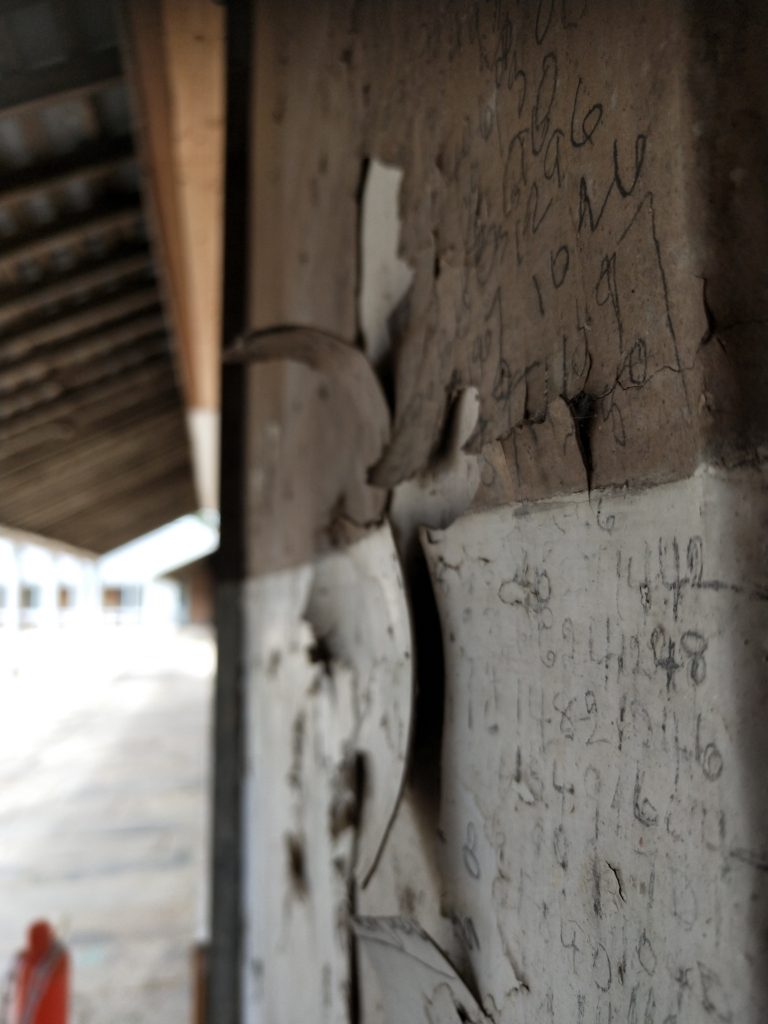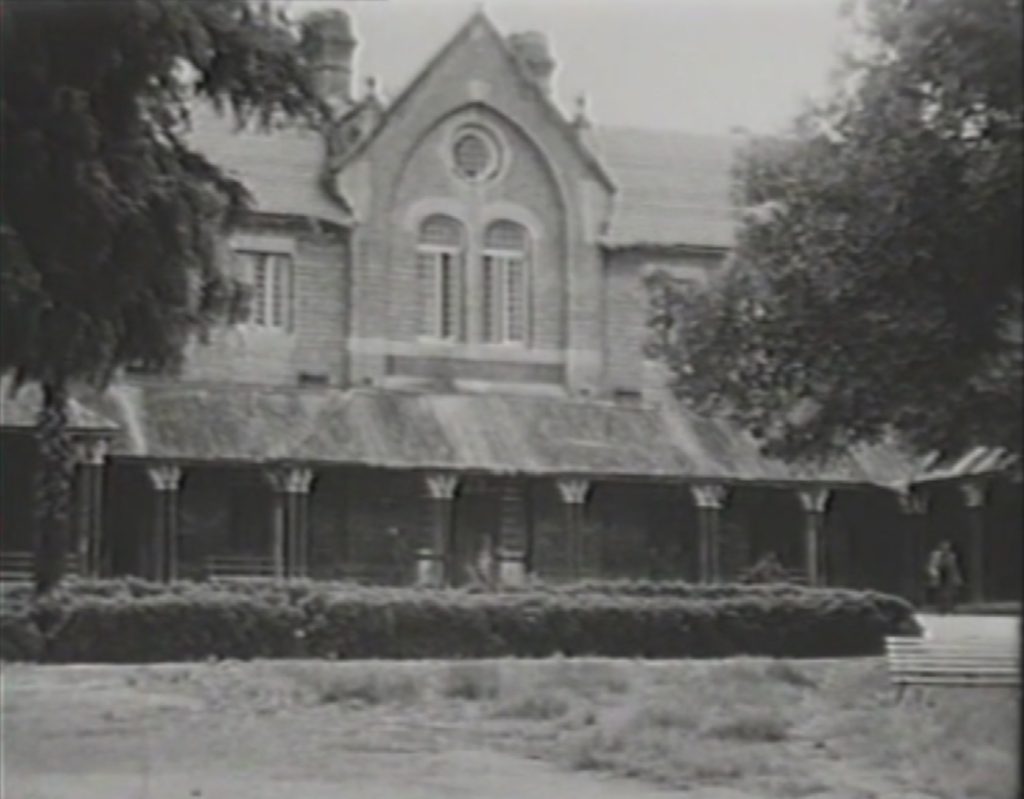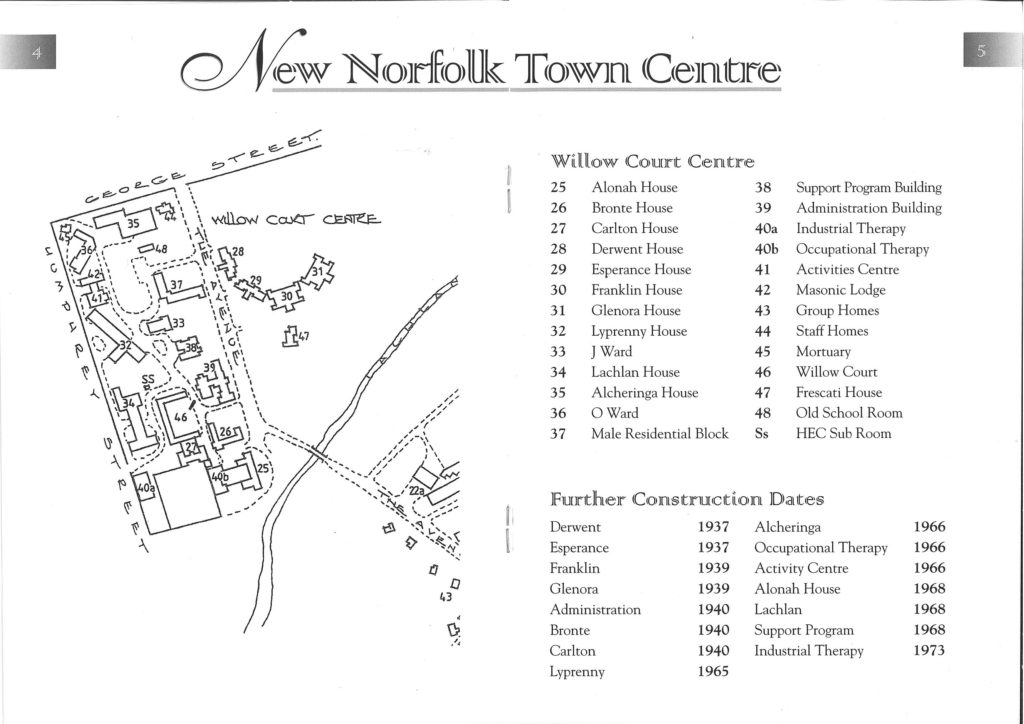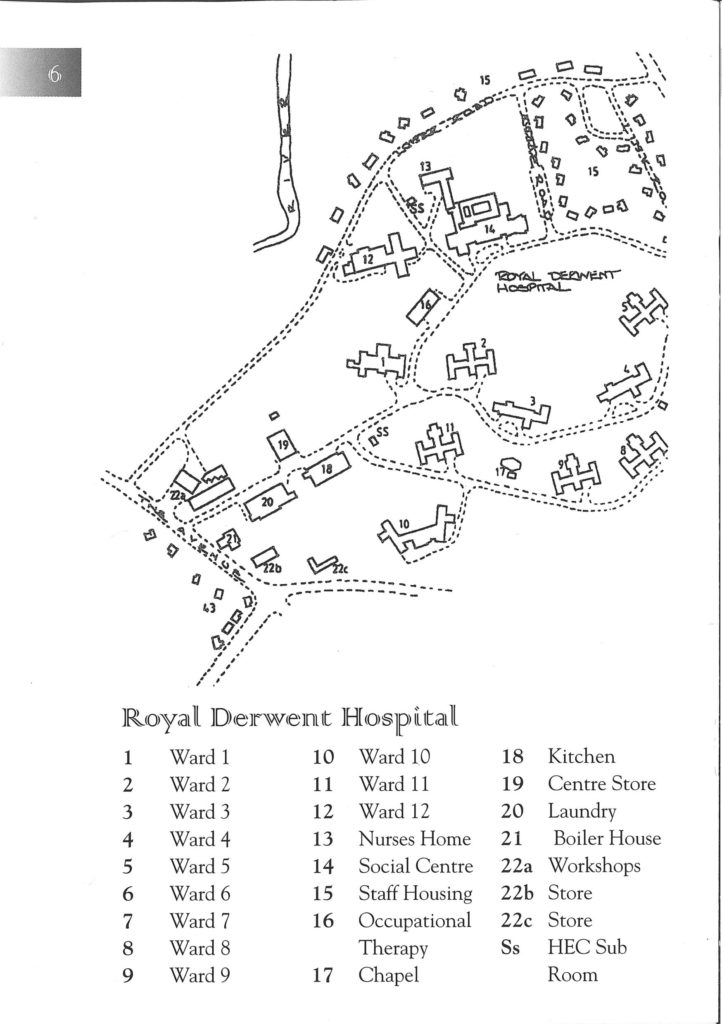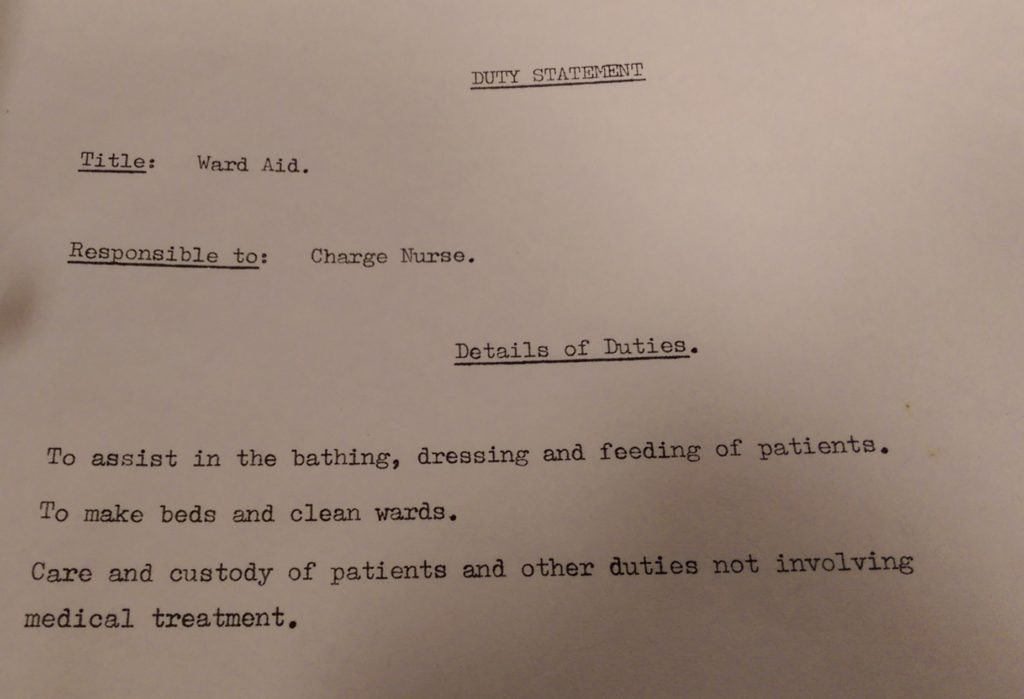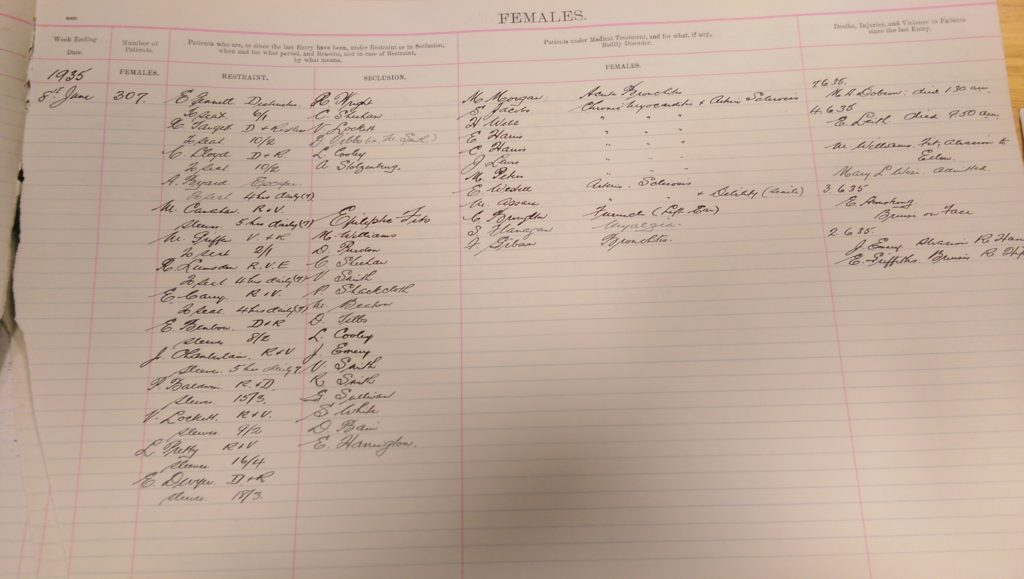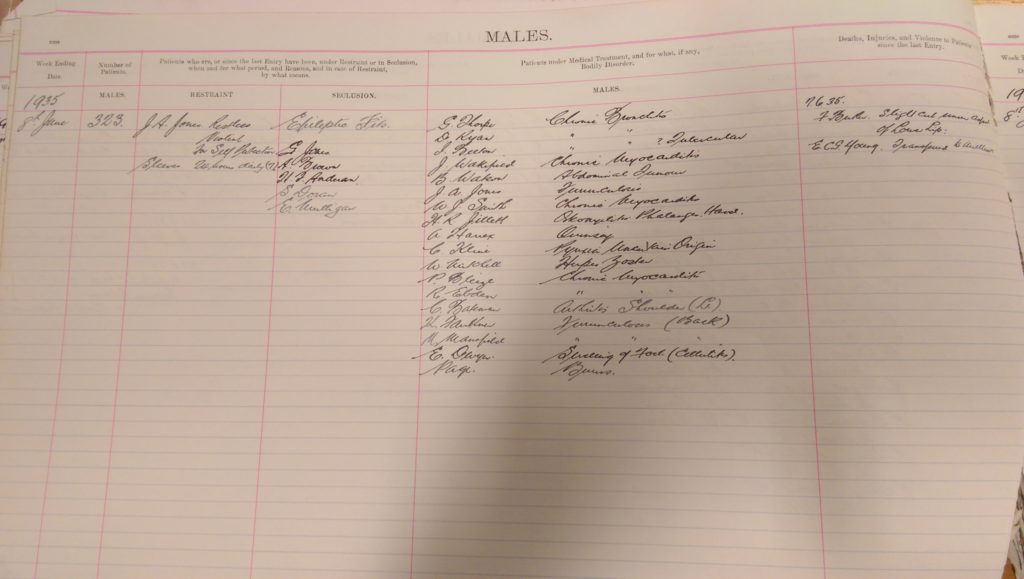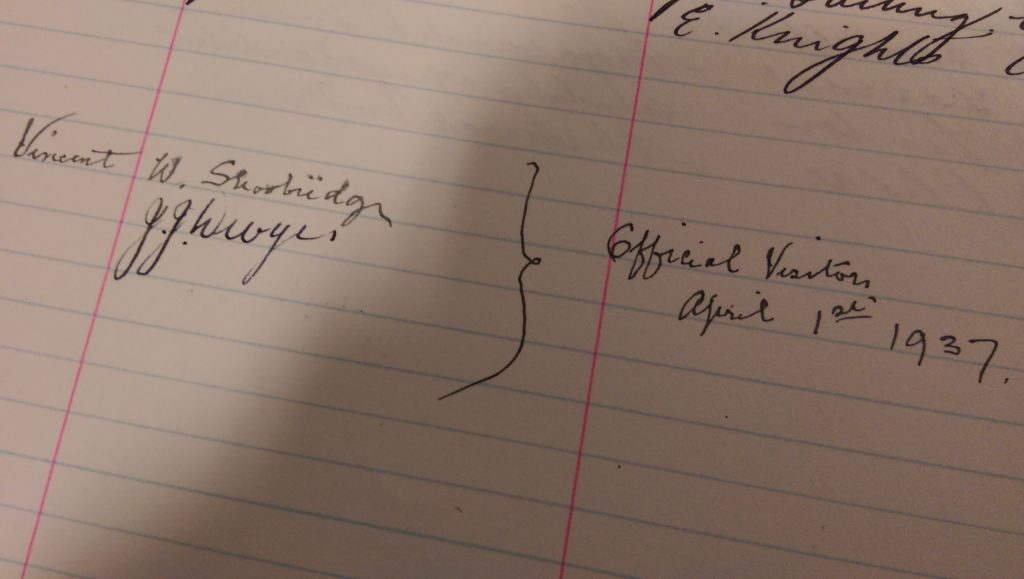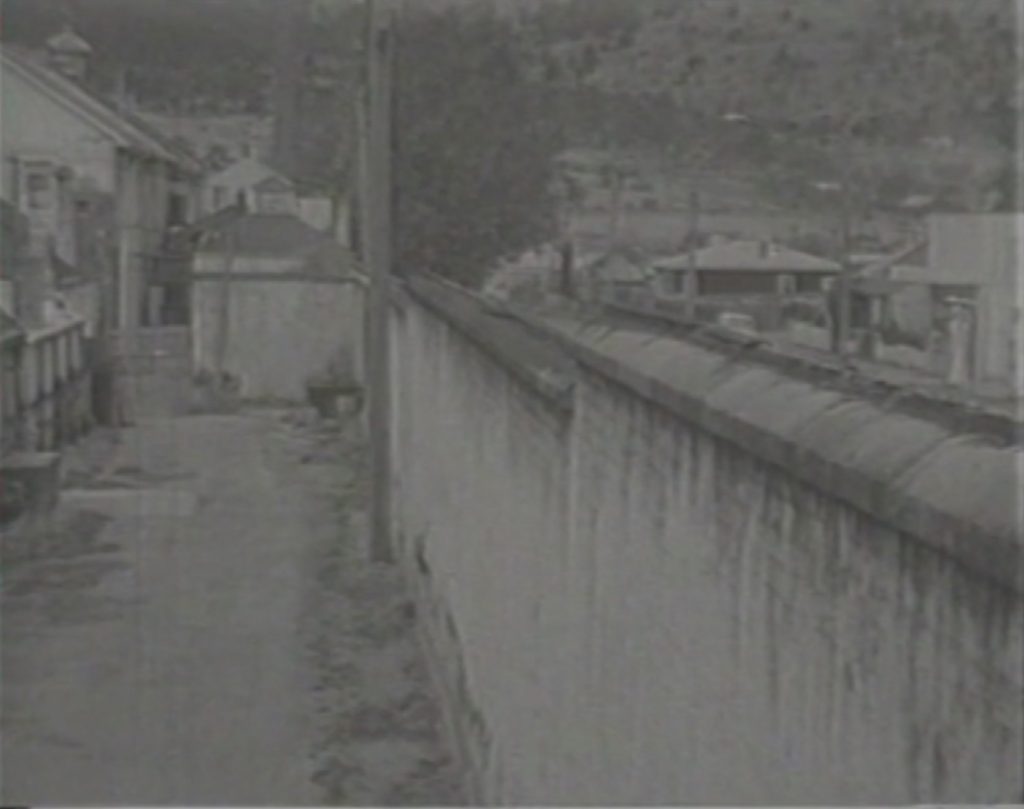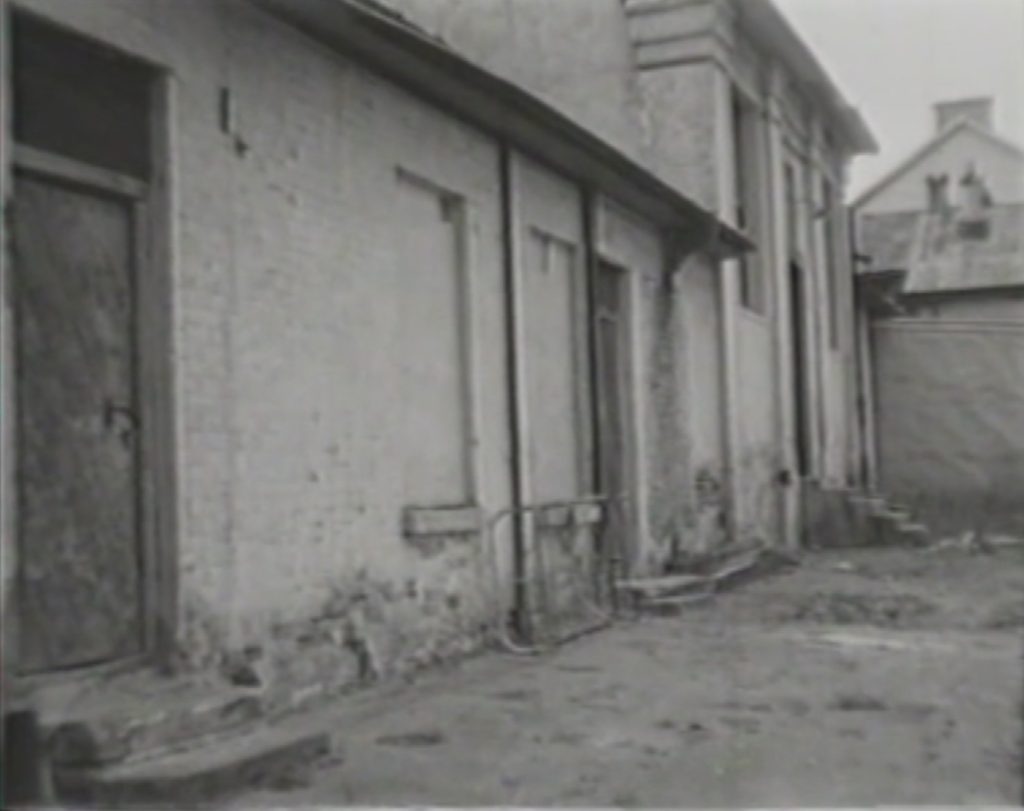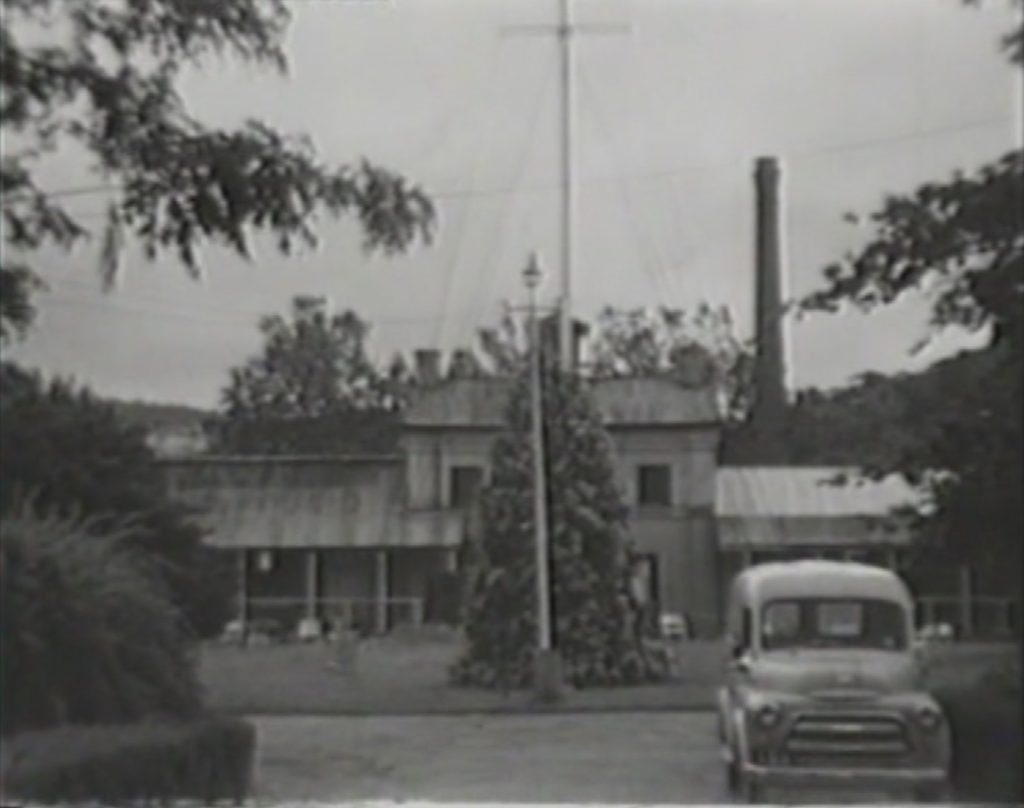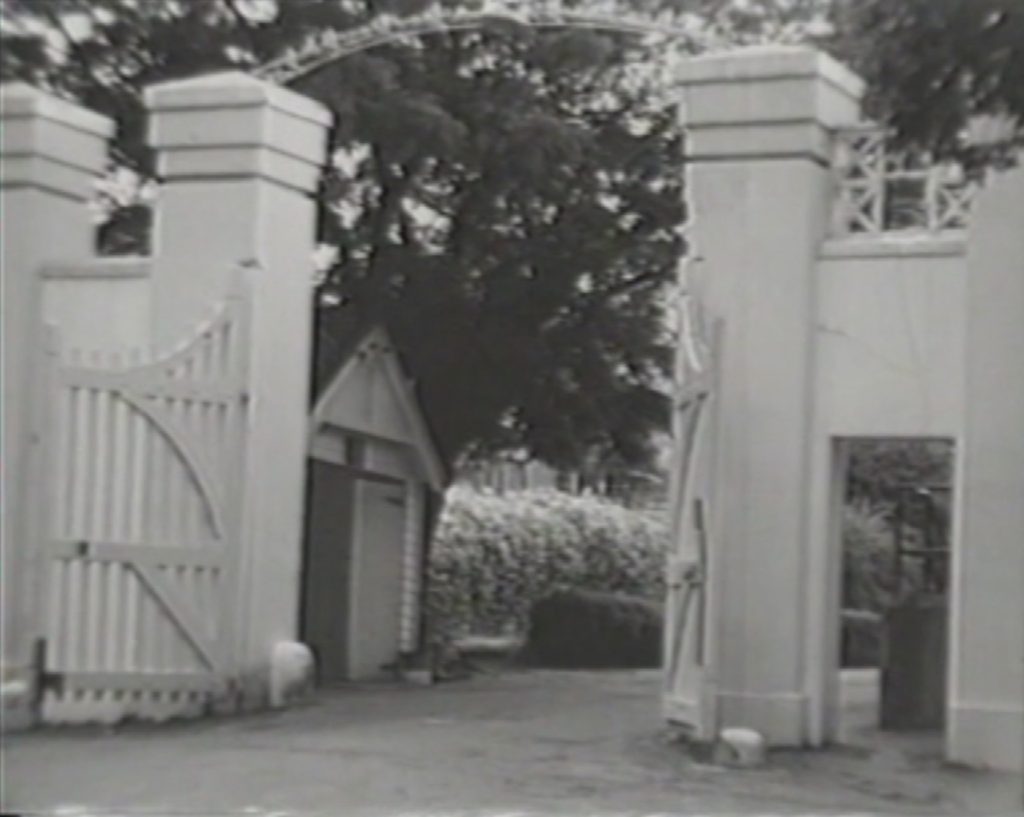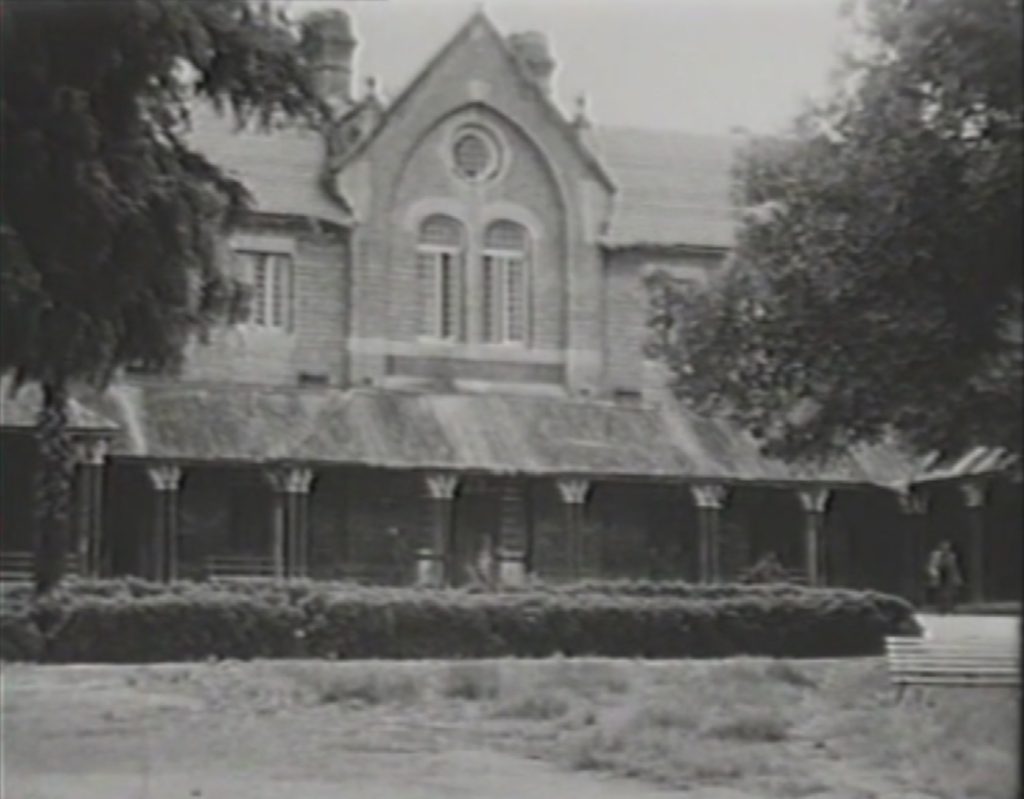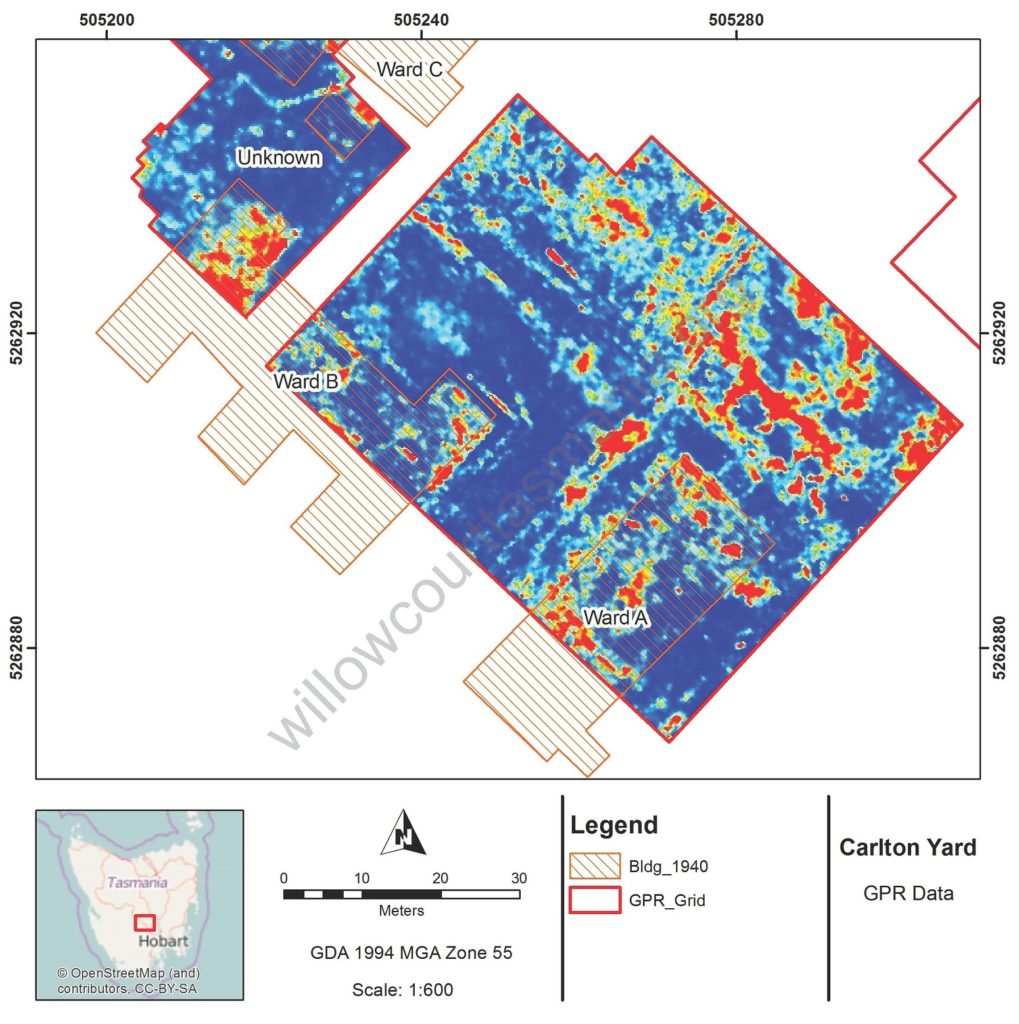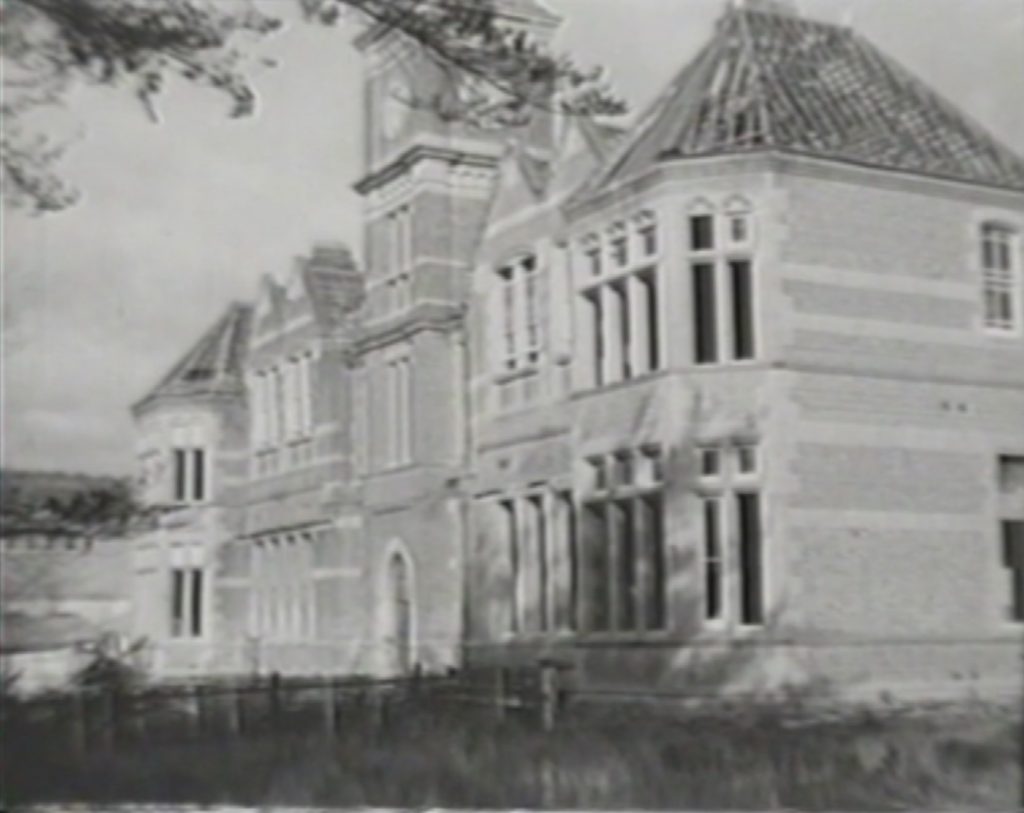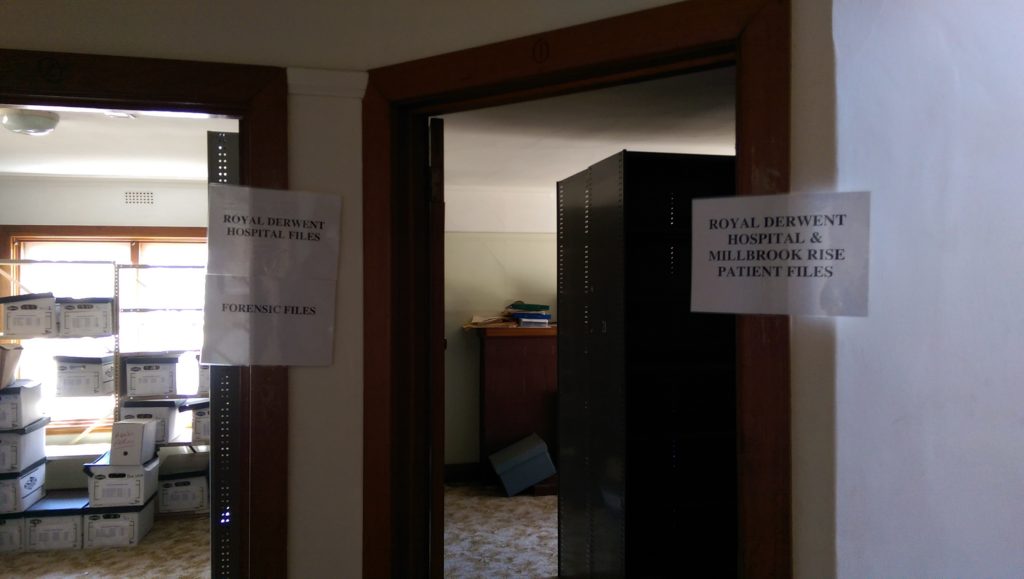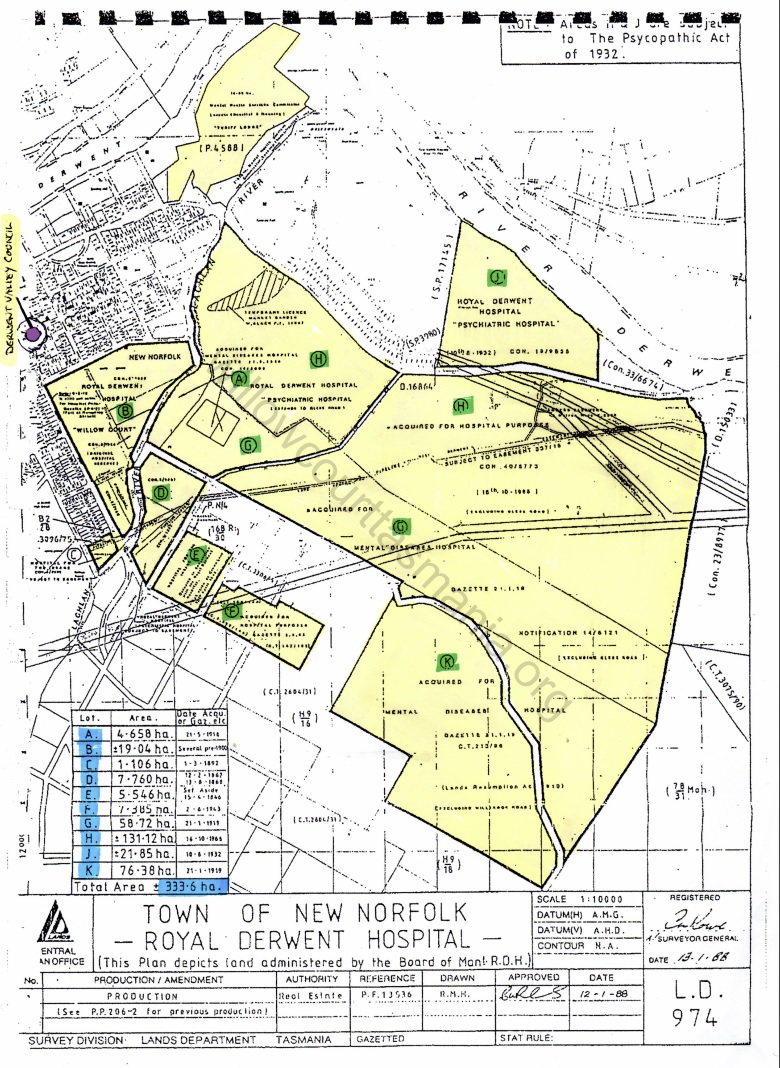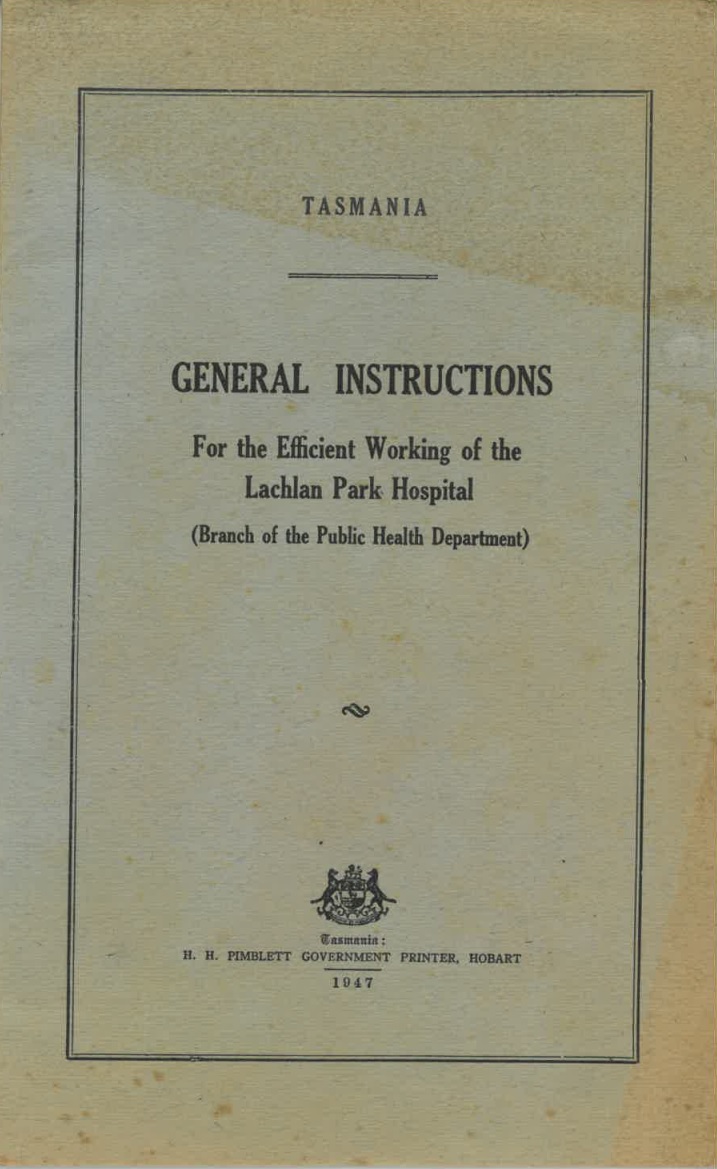For those people who have visited the “numbers wall” at Willow Court you would know that it is growing increasingly fragile in its unprotected state. This wonderful example of human interaction with the physical structure is exposed to the elements and any and all visitors.
Todays investigation revealed some dates which might suggest a time period for this person’s time at the institution. With other knowledge we have from a witness who started working in the 1960’s as a Ward Aide, we can most likely determine that a patient from “B Ward” (pictured below) was responsible for the works. The witness saw the room that this man slept in and remembered it being covered in the same work. Similar writing can be found on the roof of the soldiers niche and on the rear of the Agrarian Kitchen (B Ward or Bronte House).
During an archology dig a few years ago Flinders University Associate Professor Heather Burke had a mathematics expert look the the work to determine if the numbers were the work of brilliance or madness. The conclusion was, brilliance beyond the Mathematician’s knowledge or most likely madness.
Some of the photos below contain some hints as to when this work occurred. A date range was left for us to determine it was created between 1947 and 1964.
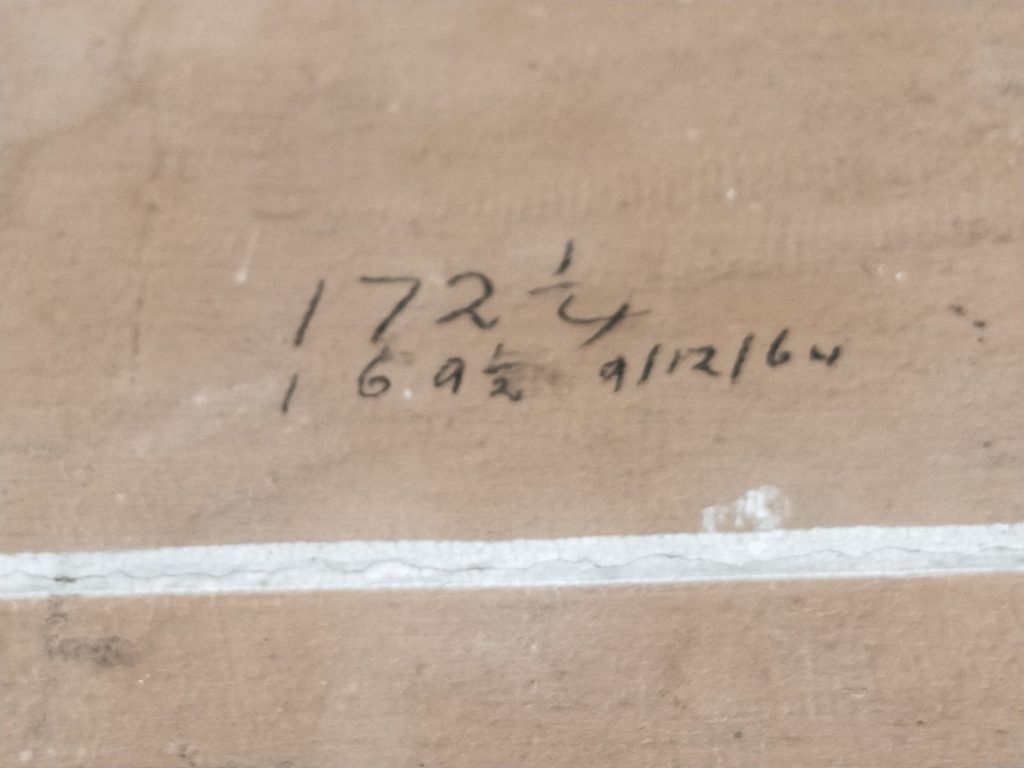
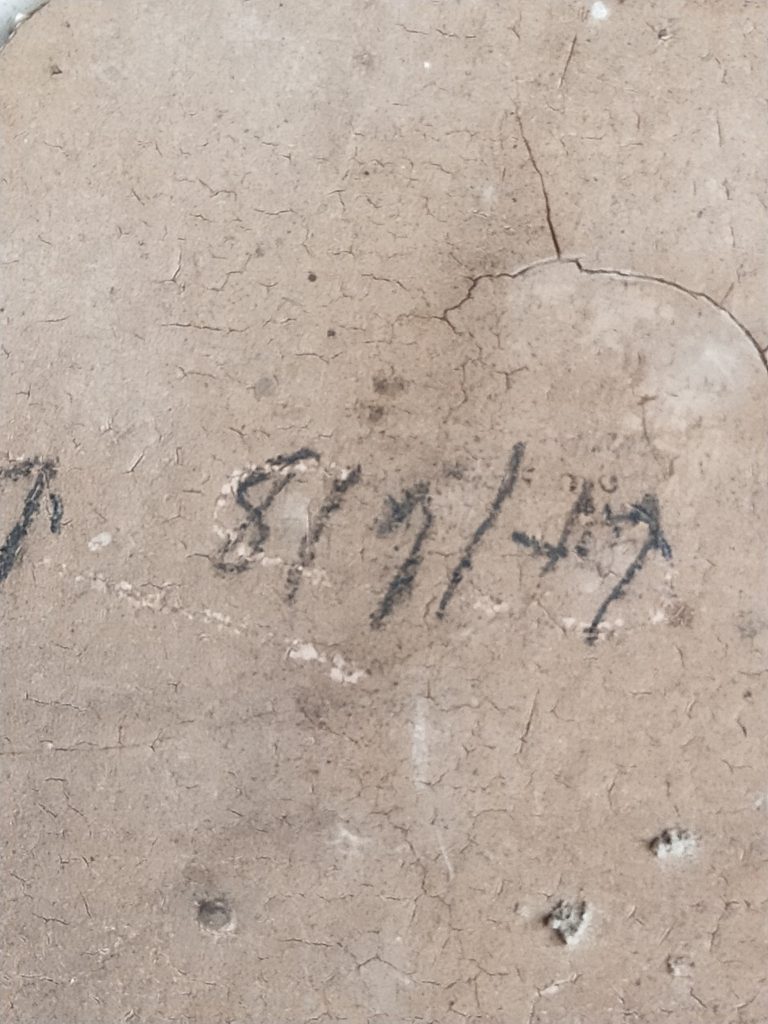
It is believed this was written by a tall, right handed male patient. Male because this was done when the site was gender divided, right handed because of the slant of the writing and tall because of the height on the wall it was written.
While our witness was able to help us with his ward location, the patient’s name and his motivation for writing these numbers and messages is still a mystery.
